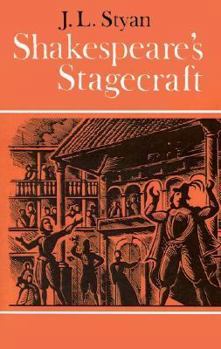Shakespeare's Stagecraft
Select Format
Select Condition 
Book Overview
For many years, critics and students of Shakespeare have tended to stress that his plays are poetic structures embodying 'themes', and these structures have been analysed in great detail. Professor Styan advocates another approach. The plays were written for acting, in a theatre of a particular type. If we ask what effects this kind of theatre encouraged and how Shakespeare exploited them, the plays are seen as a sequence of stage-effects, planned with great art so as to enrich, reinforce and modify each other. Professor Styan begins with the known facts about the Elizabethan theatre, stressing the effect of the size of the apron stage, and the degree in which the spectators situated all around are involved in the action. It was a theatre of movement and grouping, and above all speech. Shakespeare's verse is full of suggestions about how it is to be delivered; it is, in Professor Styan's word, 'gestic'. Professor Styan shows in very many examples, quoting the text and examining its dramatic implications, what the words suggest about movement over the stage, about the relationship between groups of players on the stage, and about the delivery and dramatic effect of the words themselves. Thus we build up a new sense of the whole play. This is a convenient and comprehensive introduction to the study of Shakespeare's dramatic craftsmanship, which also reopens that direction of enquiry which Granville-Barker first explored.
Format:Paperback
Language:English
ISBN:0521094356
ISBN13:9780521094351
Release Date:November 1967
Publisher:Cambridge University Press
Length:256 Pages
Weight:0.80 lbs.
Dimensions:0.6" x 5.5" x 8.6"
Customer Reviews
1 rating
All the World's a Stage
Published by Thriftbooks.com User , 21 years ago
Professor Styan had provided an invaluable service in bringing Shakespeare's plays alive, not for the actors or director, who tend to add their own touches to the stagecraft, nor even for the playgoer, who is a witness to the result, but for the reader of the plays, who must struggle with the fact that what few stage directions survive in the quartos were in many cases cobbled together from memory by the players and are not necessarily Shakespeare's own. Styan looks for clues to what the Bard envisioned in the texts of the plays themselves, as, for example, in this scene from "The Winter's Tale," wherein a father wipes his son's nose: "What! hast thou smutched thy nose? / They say it is a copy of mine. . . Come, captain, / We must be neat. . ." as well as in the physical appearance of the Elizabethan stage, which allowed for a much greater flexibility in terms of blocking and grouping (not to mention violations of the unities) than the Victorian picture-frame stage of the last century. Professor Styan's knowledge of the plays, which is encyclopedic, may lead to the occasional excess, but his analysis is difficult to argue with. I am left with only one question: why doesn't the professor deal with what is undoubtedly Shakespeare's most famous stage direction, also from "The Winter's Tale": "Exit, pursued by a bear"? Maybe he just didn't want to get into a discussion of whether or not a real bear, from a nearby bear-baiting arena, was used for the effect, and whether the bear could be relied upon to chase Antigonus upstage or downstage.





